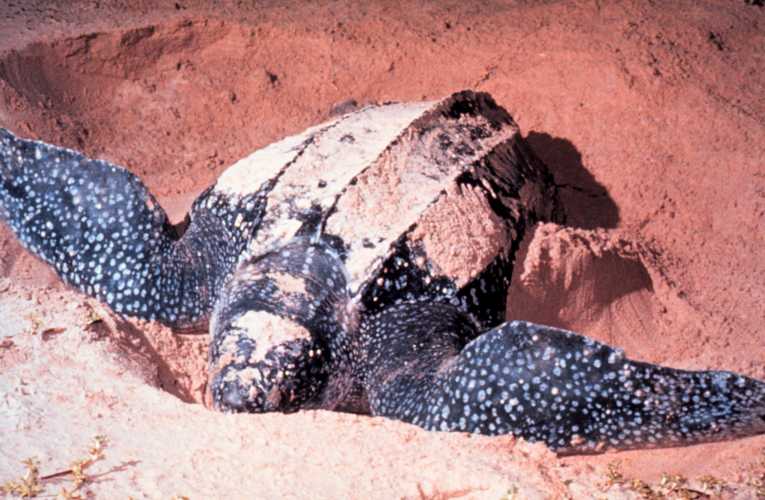Lumbering giants in-a-hard-shell they may be, but that doesn't stop leatherback turtles from being a breathtaking sight whenever they wallow close enough to the shore to be spotted. And at up to nine feet in length, and 2,000 lbs in weight, they're pretty unmissable to anyone casting their eyes seawards at this time of year.
Eyes peeled for turtles
Keeping such an eye on the waves is exactly what the Marine Conservation Society - or MSC, based in the UK - would like to see more of us doing this summer. It is asking holiday-goers and coast-dwellers to record their leatherback sightings online, to help get a better handle on their numbers. Whilst they may be on the endangered list globally, the Atlantic has seen a resurgence in their numbers - and the UK's waters at this time of year are great for catching a glimpse of 'leatherback'.
Leatherback turtles have been on conservation watch-lists for many years - their numbers continue to decline in both the Indian and Pacific Oceans. But in the Atlantic, populations seem to be on the rise, something that could be tied to surging jellyfish swarms. Leatherbacks have a fondness for these slimy invertebrates.
Jellyfish for lunch?
"While conservation action at important nesting beaches is likely to be playing a part, it may also be due to the increasing availability of their jellyfish prey, combined with collapses in the populations of predatory fish such as tuna and sharks," explained Dr Peter Richardson, the Biodiversity Program Manager at MCS.August is a great time see leatherbacks, especially around the UK's south-west coast, in Cornwall or Wales.
Seven reported sightings have been confirmed in just the last fortnight. Either from a cliff-top, or a coastal boat, leatherbacks can at first be confused for deadwood, or discarded furniture.
But on getting a closer look, their giant flippers and distinctive ridged-backs, dappled with white, make them unmistakable, advises Dr Richardson.
"The leatherback is the largest of all marine turtle species and at a distance could be mistaken for a floating log, but if you approach them slowly and carefully, once you see their large reptilian head, massive flippers and ridged leathery shell you can't mistake them for anything else."
Keeping the sea turtle-friendly
If you'd like to join the lucky ranks of those who have seen these wonders of the ocean, the MCS has created the Turtle Code, both to help spotters, and to explain how your actions can help conserve leatherbacks.
Keeping refuse out of the oceans is vital. Plastic bags are an obvious no-no; the hapless turtles mistake them for jellyfish. And fishermen should make sure none of their gear is discarded at sea - entanglement in lines is another serious turtle hazard. The lesson is clear - the more care we can take care of our coasts, the more such natural spectacles will flourish, to enrich all of our lives.
Top Image Credit: © National Oceanic and Atmospheric Administration, NOAA










